There Vespa orientalis it is an insect of the family Vespidae, vcommonly known as eastern wasp. It is a vespide that jumped to the headlines in 2022 due to its massive presence in Lazio, especially in the urban agglomeration of Rome. At the end of the summer, these wasps show a certain aggressiveness in the search for food and can create problems for people who can accidentally come across near a nest. Additionally, this wasp is a major and harmful predator of bees, with severe damage done to hives as a result.
In this article we will show you how to recognize the Vespa orientalis and how to behave in different situations of potential danger.
Origin and diffusion of the Vespa orientalis
On the exact origin and diffusion of the Vespa orientalis multiple media speculations are taking place. The name of the species, orientalis, suggests that its origin is Asian. This is true looking at the distribution area as a whole, which goes from North Africa to India, passing through the entire Middle East. In reality this species of wasp, to date, is also considered native in our southern regions, with a stable presence in the South, especially in Sicily and Calabria, more recently in Campania.
In other words, the Vespa orientalis it’s not a alien insect, has only moved its territorial presence further north (just think that the insect has been reported as far as Trieste). So be careful not to confuse the Vespa orientalis with the Vespa velutinaa much more aggressive species and recently arrived in our country, this yes appellable as the Asian hornet.
Invasion of the Roman area
As mentioned the Vespa orientalis is making headlines for his invasion of Rome. The insect’s range is moving to the northernmost regions. This is primarily due to climate change, with the increasingly mild winter seasons that allow the wasp to expand geographically. But why an urban context like that of the capital?
The answer is simple and is related to the availability of food. In the summer this wasp is looking for protein sources to expand the colony, and a huge city, plagued by the endemic waste problem, is the ideal habitat for the insect.
Meat scraps, sugary foods such as rotting fruit are an incredibly attractive food source for an insect like Vespa orientalis.
Moreover, in the city, such a vespid has few natural predators and very easy to find crevices to build the nest, thus starting to become a problem for people.
How to recognize Vespa orientalis

There Vespa orientalis it is quite easy to recognize, as it has a unique and very eye-catching color.
It is in fact entirely red-brown, including the transparent wings, with the exception of bright yellow bands exclusively on the 3 and 4 abdominal bands and on the head.
The dimensions of this wasp range from 2.5 to 3.5 cm, not very different from those of the most common Vespa crabro (of which it is close relative), which is slightly larger. The distinctive character, however, is the color: if you notice, in fact, a reddish wasp with a fluorescent yellow band, in all probability you are facing a Vespa orientalis.
Where does it build the nest?
There Vespa orientalis in its natural habitat it prefers the hollows of tree trunks or even the crevices of the ground to build its nest. In an urban environment we can find a nest between the holes in the walls of old buildings, under the cornices and canopies, and even in the house, typically in the roller shutter boxes.
The nests, created with scraps of organic material, are usually small in size, but can also exceed 60-80 cm in diameter.
Is Vespa orientalis dangerous for humans?
There Vespa orientalis it usually does not tend to attack humans, unless it feels threatened. In the city this can be more frequent than in a forest. In a completely involuntary way, for example if disturbed in the waste or near the nest, the insect can feel in danger and therefore respond with attacks and bites, even repeated. Unlike bees, the wasp does not die after being stung. The latter is in fact able to easily extract its sting from the skin of the victim and, therefore, can strike again. The injected venom, fortunately, is no more dangerous than the average of other venomous hymenoptera, it can however cause severe reactions in allergic subjects, or even in normal people, if the bites are numerous.
In the event of a sting, contact the nearest poison control center, even just by phone, for indications on pharmacological prophylaxis based on the symptoms.
What to do if you come across a Vespa orientalis nest?
The most sensible thing to do in front of a wasp and hornet nest is to get away as quickly as possible and contact the competent authoritiesfor example, here you will find that of civil protection for the municipality of Roma Capitale.
It is not recommended to resort to do-it-yourself remedies to eliminate the oriental wasp, the ones we normally recommend for defend the orchard and apiaries.
In an urban context, wrong actions can cause a hyperaggressive reaction of the insect, so it is better to rely on expert hands and above all adequately protected during the intervention.
Vespa orientalis and beekeeping
In the diet of the Vespa orientalis there are live bees, with hives that are also violently attacked in the summer-autumn period.
The wasp preys on bees in front of the hive’s step or even in flight, compromising the normal flight activity to gather pollen and nectar, also causing huge losses.
Normally, if the presence of Vespa orientalis it is moderate and the predated families are strong and healthy, there is no loss of the family. This can happen if the bee family is weaker and there is no adequate turnover in the total population.
The seasonal climatic trend also affects, with the best seasons for bees and honey production coinciding with the favorable years for the Vespa orientalis and the other hornets.
Beekeepers feel the need to defend their precious bees from this harmful predator. The best way to do this is by acting in the right stages of its life cycle.
Life cycle of the Vespa orientalis
There Vespa orientalis it has a different life cycle from that of bees.
Society is annual, with the colony dying in the fall leaving only future fertile queens alive. These overwinter in the nest itself or in other small crevices. The cycle resumes in spring (March to May), with the queens starting to build new cells where they can lay (primary nest).
The new born, the workers, in late spring will contribute to the expansion of the nest, with the first attacks on the hives already in June or July.
Between August and September the activity of the Vespa orientalis it is at its peak, with the population greatly increased, up to hundreds of specimens, and more violent attacks in search of food (the poor bees).
How to get rid of Vespa orientalis
The most suitable time to eliminate the Vespa orientalis it is in spring, perhaps identifying the primary nests that will start the new colony.
The important thing is to intercept the wintering queens, in order to keep the population low. It is more difficult to intervene between August and September, as the population of the wasp colony is at its maximum development. It will also be possible to kill hundreds of wasps without significantly solving the problem and reducing the acceptable damage to hives.
Types of traps
To fight the Vespa orientalis in beekeeping different types of traps have been developed. The simplest to put into practice are those that attract wasps with food baits.
For example, you can use a pet bottle with special cap and fill it with sugary substances, such as beer mixed with small amounts of sugar. Protein baits, with meat or fish scraps, are very attractive to wasps.
A variation of the bottle trap is the one with glue, consisting of a
support made of wood or other materials, glue and bait (meat or fish).
The glue should be neutral to the smell if possible and dry as slowly as possible. Furthermore, it must in any case maintain a good adhesive power to hold the la on the support Vespa orientalis.
There are also more professional traps, real fixed structures in wood and metal nets, available by contacting the beekeepers’ associations.

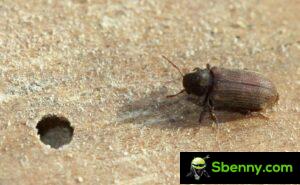
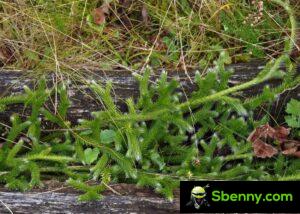
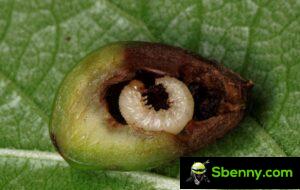

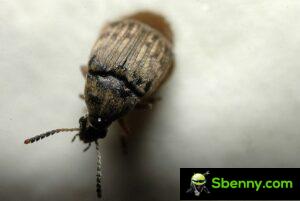
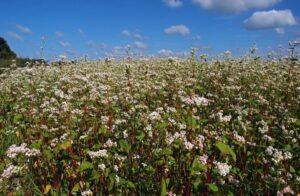
Start a new Thread